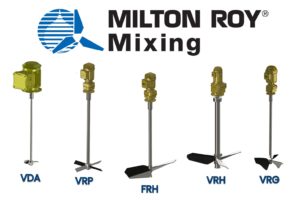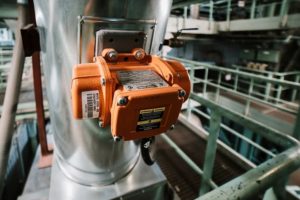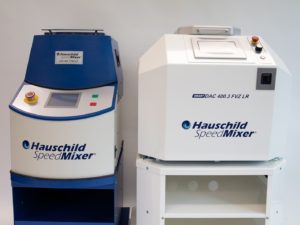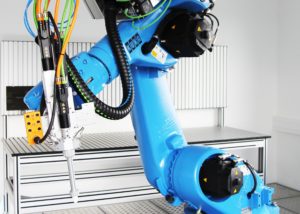Grundfos Stormwater tanks – Helping Reduce the Impact of Excess Runoff and Contaminants
Increasingly, cities and low-lying areas are at risk of sewer overflow from extreme rainfall, with property, the economy and ultimately human lives at stake. Placed strategically, stormwater tanks help reduce the impact of extreme climatic events by holding back excess storm water and contaminants.
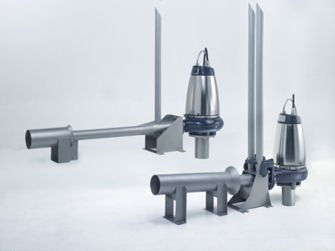
Grundfos RainJets (Image: Grundfos)
This protects the environment and makes possible the intelligent management of storm water flows, resulting in savings on infrastructure investments.
The Grundfos handbook “Design of Stormwater Tanks – Recommendations and Layout” covers every aspect of stormwater tank design, sizing, installation and positioning, control strategy and equipment, and shows how such measures ultimately offer savings on investments.
The concept of stormwater detention is to temporarily store excess storm water runoff. This is to avoid hydraulic overload of the sewer system, which could result in the flooding of roads and buildings with untreated wastewater or its release directly into the environment, causing pollution. When space is available in the sewer system, the detained water is released at a rate not exceeding the capacities of the sewer system, and the tank can then be cleaned ready for the next flush.
“We believe that the proper utilisation of existing wastewater infrastructure together with a stormwater tank offers the greatest benefits with risk-reduction and cost effectiveness,” says Bruno Kiilerich, Application Specialist, Grundfos. “That is why we have prepared a handbook for everyone concerned about extreme climatic events and involved in their resolution with stormwater tanks. Grundfos supplies more than the equipment required – we stay with the customer for the entire project.”
Meeting the challenges ahead
Climate change is increasingly the cause of extreme weather phenomena around the world, for example extreme rainfall. This challenges the existing storm water drainage system, not least because an increase in rain intensity of 40% to 60% will reduce the return period of severe flooding events. Furthermore, increases in population in low-laying areas and near river deltas and urbanisation make the consequences of extreme weather worse.
However, flooding can also hit where least expected. Unusual weather patterns can – and do – cause unexpected storms and heavy rains in regions where historical data has offered no warning. In recent years, many examples of such unexpected floods have happened around the world.
The number of flood scenarios has been increasing over the past decade. Any region faced with high annual rainfalls, increased populations, and expanding cities will increasingly be called upon to focus on flood control and stormwater management.
Stormwater tanks are an effective way of reducing peak flow and equalising flow rates from storm water runoffs in the sewer system. Stormwater tanks are a cost-effective solution, because sewer lines are already constructed and generally have a substantially remaining lifetime, and replacing existing pipes in an urban environment is – in addition to being very expensive – troublesome and can take many years.
Stormwater tanks can be relatively easily adapted to the sewer system, and during heavy rain the sewer system is relieved by guiding excess storm water to the stormwater tank for temporary storage. All this illustrates the advantages of self-cleaning, pump-managed stormwater tanks.
Total solutions for future scenarios
The Grundfos handbook “Design of Stormwater Tanks – Recommendations and Layout” guides the reader step-by-step through every aspect of stormwater detention. Stormwater tanks can be built to almost any size and shape. The inlet and outlet can be managed by gravity, by a pump system or a combination of both, depending on hydraulic conditions in the system.
The variation in stormwater tank design is often due to differences in construction, and means that the operation of each stormwater tank must be considered as a unique case. However, regardless of whether the tank is renovated or newly constructed, the determining factor for the effective use and efficient cleaning is the hydraulics of the system, as it is the flow of water that cleans the tank.
The hydraulics of the system require the consideration of filling capacity, mixing, cleaning and emptying as well as the retention time of the storm water runoff. Equipment installed in the tank can directly influence the hydraulics, and the selection of equipment must address these issues.
Simulations using Computational Fluid Dynamics (CFD) to describe flow patterns in for example pumps, pumping stations and stormwater tanks have proven to be an extremely useful tool. Correctly applied, CFD catches design flaws early in the process, ensuring cost savings on operation, downtime, cleaning and maintenance well into the future.
“At Grundfos, we have been using state-of-the-art simulation tools to improve our products for more than 15 years,” says Mick Eriksen, Application Manager, Grundfos. “We have utilised CFD tools for describing, optimising and visualising the hydraulic processes that take place during stormwater tank operation, using the finite volume method, with great success.”
Correctly dimensioned pumps ensure optimum delivery of wastewater to and from the stormwater tank, reducing the hydraulic load and ensuring available capacity. Grundfos can supply pumps for dry or submerged installation that can handle the heavy flows required. The Grundfos range of level sensor accessories ensures that pump systems can control possible fluctuations in demand for performance.
Efficient mixing and cleaning of stormwater tanks is essential to minimise operation costs and avoid odour problems. The Grundfos range of RainJets is especially designed for this purpose, offering a robust construction and easy service and maintenance. The RainJets can work either alone or together with the robust and durable AMD mixer.
Get the handbook and find out more
Grundfos offers consultancy for stormwater tank design and optimisation as well as offering a full range of pumping and control solutions, mixers and cleaning equipment that together ensure reliable and automatic operation of the stormwater tank.
Read “Design of Stormwater Tanks – Recommendations and Layout” online as an iPaper or download as a PDF.
Source: Grundfos Holding A/S

